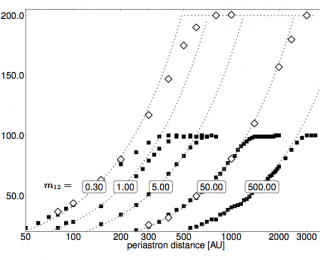
by Erika Nesvold | Jun 6, 2014 | Daily Paper Summaries
According to planet formation theory, gas giants are more massive than rocky, terrestrial planets. But Kepler-10c is the size of Neptune, and denser than the Earth! Read on to find out more about the discovery of a new class of planets.

by Erika Nesvold | May 9, 2014 | Daily Paper Summaries
Planets in the Solar System with a higher mass spin faster than lower-mass planets. But what about planets in other systems? The authors of this paper make the first measurement of an exoplanet’s spin to compare its spin and mass to Solar System planets.

by Erika Nesvold | Apr 11, 2014 | Daily Paper Summaries
A close encounter with another star can disrupt the protoplanetary disk of a young star, leaving a smaller disk behind. Can we learn anything about the encounter from the size of the remaining disk? Read on to find out!

by Erika Nesvold | Mar 14, 2014 | Daily Paper Summaries
We can measure the expansion of the universe with velocities and distances of extragalactic objects. But measuring distances is tough! The authors of this paper have developed a new technique for measure the distances of AGN using the “echo” of light from heated dust.

by Erika Nesvold | Feb 14, 2014 | Daily Paper Summaries
Close encounters with a passing star can excite a planet into an eccentric or inclined orbit. But a circumstellar disk can damp a planet’s eccentricity and inclination. Who wins? Find out when the authors of this paper model a stellar flyby with two circumstellar disks!





